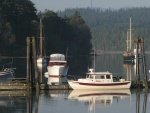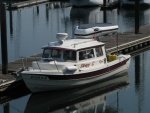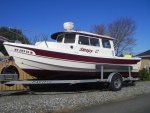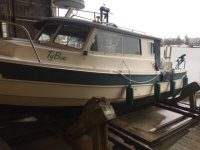“Some of our best performing antifouling paints in our past tests have been hard, modified epoxy paints. One of the drawbacks of these paints is that they can lose their effectiveness after being hauled out and stored ashore for more than 30 days. Even newly painted hulls can lose their effectiveness if the launch is delayed too long. Fortunately, there are ways to reactivate a hard paint on a newly painted boat that has been stored ashore for less than a year.
The following instructions apply for Pettit Marine Paint Trinidad, Trinidad VOC, Unepoxy Plus, Unepoxy Standard, Unepoxy VOC, 1933 Copper Bronze, Trinidad SR, Super Premium Performance, Pettit Pro-Coatings Trinidad 75, Trinidad Pro, and Copper Guard. The advice is similar to that offered by other makers of hard, modified epoxy antifouling paints such as Interlux, Blue Water, and Sea Hawk Paints, although it would be advisable to check with your paint’s manufacturer to confirm the proper procedures.
1. Launching of newly painted boats may be delayed up to 60 days after painting without sacrificing antifouling performance.
2. Boats painted between two and 12 months prior to launch date must be scuff-sanded with 220-grit production paper or abrasive pad before launching.
3. Boats painted more than 12 months prior to launch date must be lightly sanded with 100-grit production paper and recoated before launching.
4. Boats in the water for less than 24 hours (e.g. for in-the-water water testing) should be pressure washed lightly to remove dirt, salt or other contaminants and allowed to dry. These boats should still be considered newly painted and may be launched up to 60 days after the date of painting.
5. Boats in the water for more than 24 hours, but less than 30 days, should be pressure washed when hauled, then lightly sanded with 220-grit production paper immediately before re-launching. If necessary, launching may be delayed up to 60 days after the bottom has been sanded. Note: Boats re-launched within 72 hours of haulout do not need to be sanded before launching.
6. Boats in water for more than 30 days should be pressure washed when hauled, lightly sanded with 100-grit production paper and recoated with antifouling paint, even when re-launching will take place within 72 hours.







